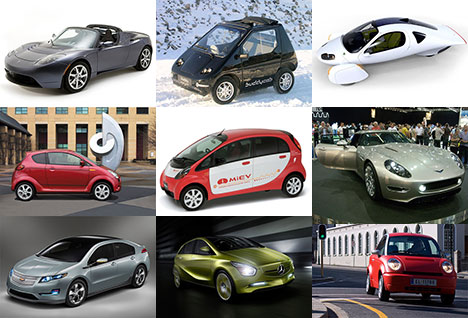In this month’s issue of the Journal of Industrial Ecology researchers report that electric vehicles or EVs may not be as environmentally friendly as conventional automobiles with internal combustion engines. Why?
There is no doubt that EVs with no tailpipe emissions contribute far less to air pollution when operating compared to internal combustion engine (ICE) or diesel engine vehicles. But that is not where the problem lies. These can be found elsewhere and include:
- The batteries in replacement and disposal contribute a considerable amount of toxic waste to the environment.
- EV production is more complex than ICE and diesel vehicles. This is because of the power trains, traction systems and batteries, the energy used to create the source materials needed them and the amount of pollution generated by suppliers.
- Recharging an EV contributes to carbon emission increases if the EV is recharged by electricity from coal-fired power plants.
Over the lifetime of a vehicle driven 150,000 kilometers (93,000 miles) findings show that the global warming potential or GWP reduction impact of EVs recharged by conventional power sources (a mix of oil, gas, coal and renewables) proves to be better than gas and diesel-powered vehicles by 20-24%. When EVs use coal-fired power plants to recharge the GWP increases by 17-27% over diesel and gasoline vehicles. That means utilities need to move away from lignite, coal and heavy oil-fired power plants to ensure a net benefit from EVs.
Production impacts on EVs driven 100,000 kilometers (62,000 miles) provided a net GWP benefit of 9-14% over diesel and gasoline vehicles. But that production doesn’t include the lifetime cost of dealing with the batteries. The toxicity potential of the batteries represents a significant unknown to date since most EVs have been on the road for less than half a decade.
Where EVs excel is in terms of smog impact reducing the photochemical oxidation formation potential or POFP by 22-33% over diesel and gasoline vehicles.
What the researchers conclude is that EVs provide only a marginal benefit over ICE and diesel vehicles. And they also note the potential challenge of recycling and disposal of EV components and advise manufacturers to consider alternative materials in future vehicle development.
A final note, if ICE and diesel-powered vehicles were to improve fuel mileage by 50%, current EVs would provide no net benefit in reducing carbon emissions.
















Len posts: “The toxicity potential of the batteries represents a significant unknown to date since most EVs have been on the road for less than half a decade.”
While, as you say, it is an unknown, any number of recycle, sequestration, tertiary usage, and disposal technologies seem possible for what in principle is just a simple chemical engineering exercise. If worst comes to worst we could always store exhausted electric car batteries in the unused multi-billion dollar Nevada Yucca Mountain radioactive waste storage facility.
If burning coal to generate electricity for drying clothes, heating bath water, comfort air conditioning, lighting night-time sports events, and billions of Watts of neon signage, is acceptable, it sure should be acceptable for propelling private passenger automobiles.
Present battery technology is too costly and offers too little energy density to be economical as the pure primary power source for most automotive needs. Range anxiety and excessive costs are the main negative factors for electric cars. But, if battery costs were to fall over 50% by 2015, as GM spokespersons have predicted, present battery technology would be plenty good enough to justify ICE hybrids such as the somewhat marginal Chevy Volt and stable mate Opel Ampera. The main potential benefit of electric hybrid cars is making nuclear, hydro, wind, solar, coal, and natural gas, practical power sources for 30-40% of private passenger car miles.
Burning coal to make electricity for any use at all is a problematic issue, and one that is logically separate from battery-powered cars. If you think burning coal is a bad idea, then make electricity using any method you like, and charge up electric car batteries with that.
Excluding batteries and associated battery control and charging circuits, and given annual production levels of more than 100,000 units, there are no sound reasons grounded in standard practice industrial engineering for costs of hybrid car drive trains to exceed $1,000-$1,500 more than conventional non-electric drive trains. Looking at GM’s cryptic exploded views of the Volt’s two electric motors, it appears that Volt uses no more than 30-40-pounds of copper and aluminum bar “wire.” Copper is presently trading for about $3.70/pound and aluminum for about $0.99. One could estimate less than $200 worth of copper and aluminum in the Volt’s permanent magnet electric motors. Without knowing the particular magnet compound, it’s impossible to accurately compute the magnet cost, but it’s unlikely that Volt motors use more than 50-pounds of $3/pound magnet material. So it seems in principle the electric motors including controllers cost less than $1,000 to produce, and the desirability and economic practicality of Volt type hybrid cars comes down to merely reducing battery costs.
The best reason to buy a Volt is the same reason one would buy any $35,000-plus vehicle such as a BMW 325i: one enjoys the way it looks and drives, and it projects a certain ego image. Drive a $35,000 Volt for a week, and then drive a $55,000 C-6 Corvette for a week. Then decide which of the two you would rather make your only car. One should notice over 150,000 C-6 Corvettes are already on the road; each one spewing at least twice the pollution per mile as a Volt.
I have spent a week with the C-6 Corvette, a few hours with the 325i, and only ½ hour with the Volt. Give me a Volt any day. I just don’t have any need to accelerate to 60 mph any quicker than 9-seconds, and I never drive over 80 mph. The Volt, like the Corvette and 325i, is not about saving money on fuel costs. It’s just a very smooth, quiet, brisk, roomy, comfortable car that handles nicely on the road, and it’s about as kind to the environment as any comfortable car can ever be. Much of the carbon and NOX emissions are shifted away from urban areas congested with ICE vehicles. In the balance, Volt-like vehicles are good for the environment, and when the battery costs fall 50% and gasoline prices rise above $5-$6/gallon, probably also good for the driver’s budget.